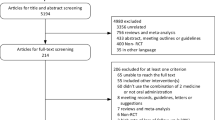Summary
The new fluoroquinolones allow effective oral therapy of infections due toPseudomonas aeruginosa. Studies on efficacy and safety of these promising agents are not recommended in childhood because of cartilage toxicity which has been observed in growing animals. However, the first quinolone antimicrobial, nalidixic acid, showed identical arthropathic effects in young animals and is licensed for paediatric use. A review of the hospital charts revealed 11 patients who had received nalidixic acid over nine to 600 days and were available for control examination three to 12 years later. For each nalidixic acid case a carefully selected matched pair, who had never received nalidixic acid, was identically analyzed. Three patients from the nalidixic acid and three from the control group reported arthralgia, which was judged to have no relation to drug therapy. Growth curve and both functional and radiological joint findings were completely normal in all cases. These results suggest that quinolone-associated arthropathy does not occur in children, even after long-term therapy.
Zusammenfassung
Die neuen Fluorchinolone erlauben eine wirksame orale Behandlung von durchPseudomonas aeruginosa verursachten Infektionskrankheiten. Auf Grund von im Tierversuch beobachteter Knorpeltoxizität auf das wachsende Skelett werden klinische Studien hinsichtlich Wirksamkeit und Sicherheit mit diesen vielversprechenden Medikamenten im Kindesalter nicht empfohlen. Auf der anderen Seite wird die Nalidixinsäure, das erste Chinolonpräparat, seit Jahren in der Pädiatrie eingesetzt, obwohl sich in Tierexperimenten identische arthropathische Effekte zeigten. Eine Durchsicht der Krankenblattunterlagen ergab 11 Kinder, die über neun bis 600 Tage mit Nalidixinsäure behandelt worden waren und nach drei bis 12 Jahren nachkontrolliert werden konnten. Für jeden mit Nalidixinsäure behandelten Patienten wurde sorgfältig ein Vergleichspatient, der nie Nalidixinsäure erhalten hatte, identifiziert und identisch nachuntersucht. Bei je drei Patienten in der Nalidixinund Vergleichsgruppe wurden subjektive Gelenkbeschwerden eruiert, die jedoch nicht in Zusammenhang mit der antimikrobiellen Behandlung zu bringen waren. Die Wachstumskurven sowie die funktionellen und radiologischen Gelenkbefunde waren bei allen Patienten vollständig normal. Diese Ergebnisse lassen vermuten, daß mit Chinolonpräparaten assoziierte Knorpel- und/oder Gelenkveränderungen im Kindesalter nicht vorkommen, auch nicht nach Langzeittherapie.
Similar content being viewed by others
Literature
Wolfson, J. S., Hooper, D. C. The fluoroquinolones: structures, mechanisms of action and resistance, and spectra of activityin vitro. Antimicrob. Agents Chemother. 28 (1985) 581–586.
Hooper, D. C., Wolfson, J. S. The fluoroquinolones: pharmacology, clinical uses, and toxicities in humans. Antimicrob. Agents Chemother. 28 (1985) 716–721.
Eron, L. J., Harvey, L., Hixon, D. L., Poretz, D. M. Ciprofloxacin therapy of infections caused byPseudomonas aeruginosa and other resistant bacteria. Antimicrob. Agents Chemother. 27 (1985) 308–310.
Scully, B. E., Neu, H. C., Parry, M. F., Mandell, W. Oral ciprofloxacin therapy of infections due toPseudomonas aeruginosa. Lancet I (1986) 819–822.
Ball, A. P. Overview of clinical experience with ciprofloxacin. Eur. J. Clin. Microbiol. 5 (1986) 214–219.
Follath, F., Bindschedler, M., Wenk, M., Frei, R., Stalder, H., Reber, H. Use of ciprofloxacin in the treatment ofPseudomonas aeruginosa infections. Eur. J. Clin. Microbiol. 5 (1986) 236–240.
Hodson, M. E., Roberts, C. M., Burland, R. J. A., Smith, M. J., Batten, J. C. Oral ciprofloxacin compared with conventional intravenous treatment forPseudomonas aeruginosa infection in adults with cystic fibrosis. Lancet I (1987) 235–237.
Gough, A., Barsoum, N. J., Mitchell, L., McGuire, E. J., de la Iglesa, F. A. Juvenile canine drug-induced arthropathy: clinicopathological studies on articular lesions caused by oxolonic and pipemidic acids. Toxicol. Appl. Pharmacol. 51 (1979) 177–187.
Simon, C. Im Tierexperiment beobachtete Knorpelschädigung durch Chinolone. F.A.C. 3–5 (1984) 785–788.
Schlüter, G. Toxicology of ciprofloxacin. In:Neu, H. C., Weuta, H. (eds.): 1st International Ciprofloxacin Workshop, Proceedings. Excerpta Medica, Amsterdam 1986, pp. 61–70.
Bouissou, H., Caujolle, D., Caujolle, F., Milhaud, G. Tissus cartilagineux et acide nalidixique. C. R. Acad. Sc. Paris. 23 (1978) 1743–1746.
Marks, M. I. Antimicrobial therapy, nalidixic acid. In:Katz, M., Stiehm, E. R. (eds.): Pediatric Infectious Diseases for the Practitioner. Springer-Verlag, New York 1985, p. 65.
Bailey, R. R., Natale, R., Linton, A. L. Nalidixic acid arthralgia. Can. Med. Assoc. J. 107 (1972) 604–607.
Author information
Authors and Affiliations
Rights and permissions
About this article
Cite this article
Schaad, U.B., Wedgwood-Krucko, J. Nalidixic acid in children: Retrospective matched controlled study for cartilage toxicity. Infection 15, 165–168 (1987). https://doi.org/10.1007/BF01646040
Received:
Accepted:
Issue Date:
DOI: https://doi.org/10.1007/BF01646040




